The bicycle in Victorian Britain is often celebrated as a vehicle of women’s liberation. But much less is known about another critical technology with which women forged new and mobile public lives – cycle wear.
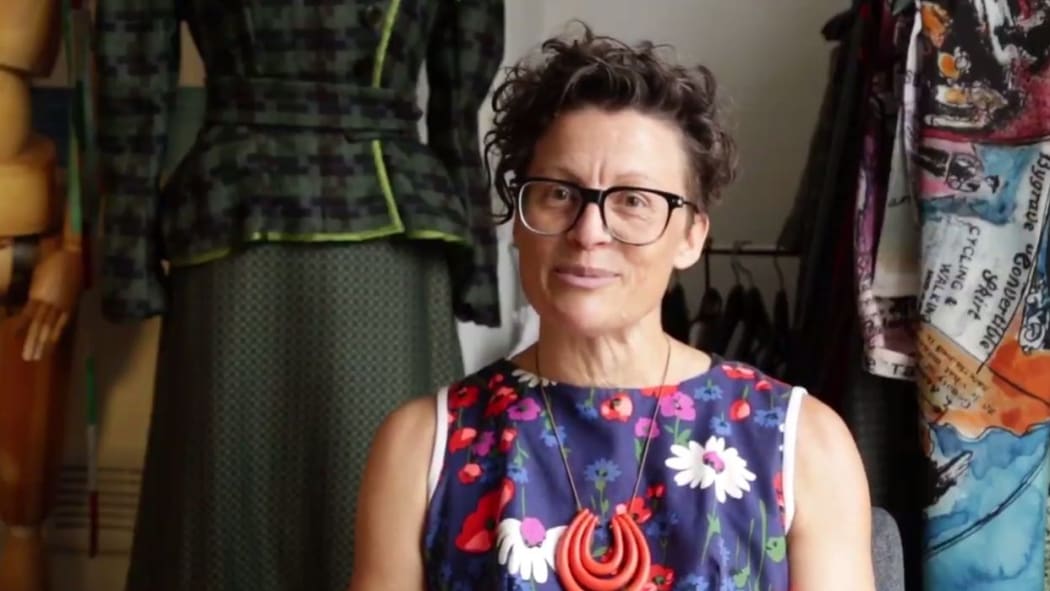
Dr Kat Jungnickel Photo: Screenshot
Dr Kat Jungnickel from Goldsmiths College in London talks to Bryan about her research into Victorian women's cycling clothing. She says middle-class women took to the new technology with enthusiasm, but they were hindered by social mores and fashion.
"Cycling was incredibly popular in the late 19th century for upper-class women ... women were some of the first early adopters of the new safety bicycle, which had the matching, even-sized wheels very similar to the bike we ride today," Jungnickel says.
"Nothing was going to stop women from cycling once they had experienced the unparalleled freedom and independence promised by the bicycle, but yes there were significant social problems as well as clothing problems."
Victorian women faced many physical and social constrictions, she says.
“Exercise was considered not really important for these kinds of women, it was even seen as unhealthy, they were seen to have limited reserves of energy and should be focused on more important things, rather than pursuing trivial pursuits and their clothing reflected and reproduced a number of these ideas.”
Middle-class women of the time were weighed down with swathes of heavy, restrictive clothing, she says.
“Fashions were comprised generally of seven pounds of heavy long petticoats, floor-length skirts, tightly laced corsets, tailored blouses, jackets, veils, gloves, hats and more, so you can imagine this really limited women’s social, physical and political mobility.
“All that material was vastly incompatible with the moving machinery of the bicycle. It was difficult and dangerous to ride your bicycle wearing ordinary dress, and newspapers of the time are filled with really gruesome detailed accounts of women suffering terrible crashes as a result of the malfunction of their clothing."
A movement for dress reform started at this time, she says, a push for “rational dress”.
“Replacing these skirts with a pair of bloomers or knickerbockers and basically making women’s clothing more fitting for active and independent lifestyles.”
Women who rode bikes and wore this type of clothing were often harassed and abused in public, she says.
“You really had to be quite brave at times, to not only ride your bicycle as a woman cyclist but to wear identifiable cyclewear.”
Women soon started to get inventive and adapt conventional clothing. They started coming up with solutions to what became known as the ‘dress problem’ with what they called 'convertible cycle wear’.
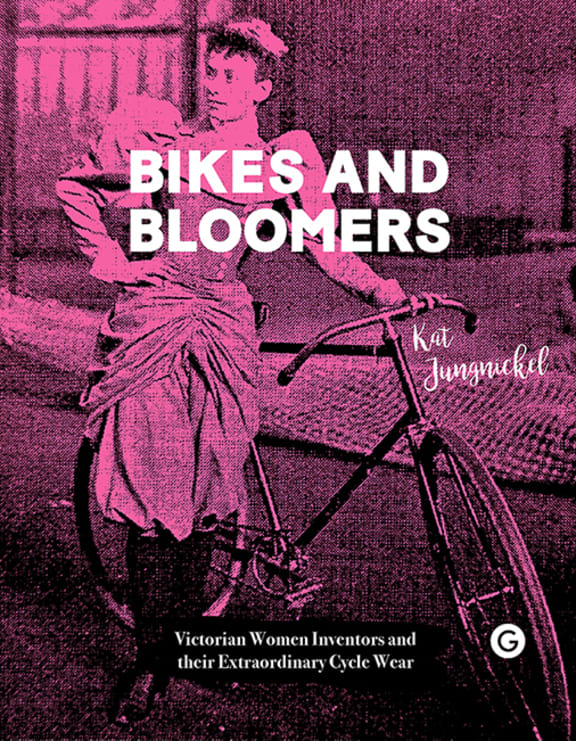
Photo: supplied
Many patents were filed for these clothing modifications and Jungnickel came across patterns for some of these designs. One she dubbed “the skirtain” a skirt with hidden strings and pulleys that could be hitched up in cycle mode to keep it clear of the bike's moving parts.
“It was the skirt that ruched up in a really dramatic way at the front and the back, you tied it off at the waist and it was really beautiful, it created these what the inventor called ‘it festooned over the hips’ and to be honest we didn’t know what that would even mean until we put it on and went ‘look at that, it’s festooning’."
Having made the “skirtain” she says it worked “remarkably well”.
“The pulleys, the buttons, the hooks, the cords and the rings worked really well to get the material up and out of the way of the wheels and they do so in a way that you can imagine would have been still quite fashionable at the time.”
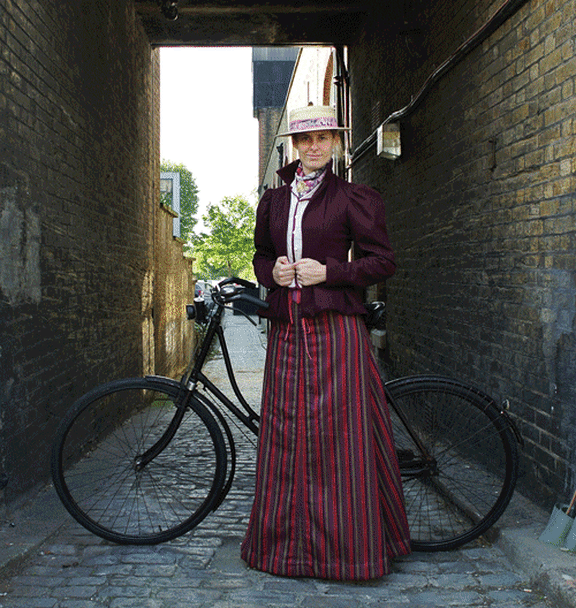
Photo: supplied
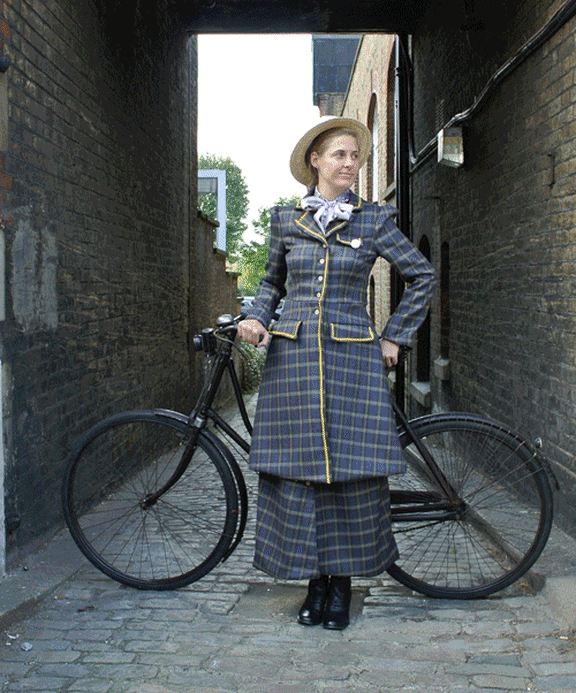
Photo: supplied
Kat is the author of Bikes and Bloomers: Victorian women inventors and their extraordinary cycle wear.
“What a joy to discover these rad, bad divas of the bicycle! Kat Jungnickel’s fascinating exploration of these early cyclists and innovative entrepreneurs opens our eyes to the fearless work of feminists past, what obstacles they overcame and how we can stand on their shoulders now.
In this accomplished, in-depth and joyful book, Kat Jungnickel restores these courageous and inventive heroines to their place in history, and shows how much we owe today to their fearless innovations! Inspirational and fascinating.”
– REBECCA MORDAN, Artistic Director of feminist theatre company Scary Little Girls
The Bikes and Bloomers Project Website has much more information on the research including patterns to download and make.
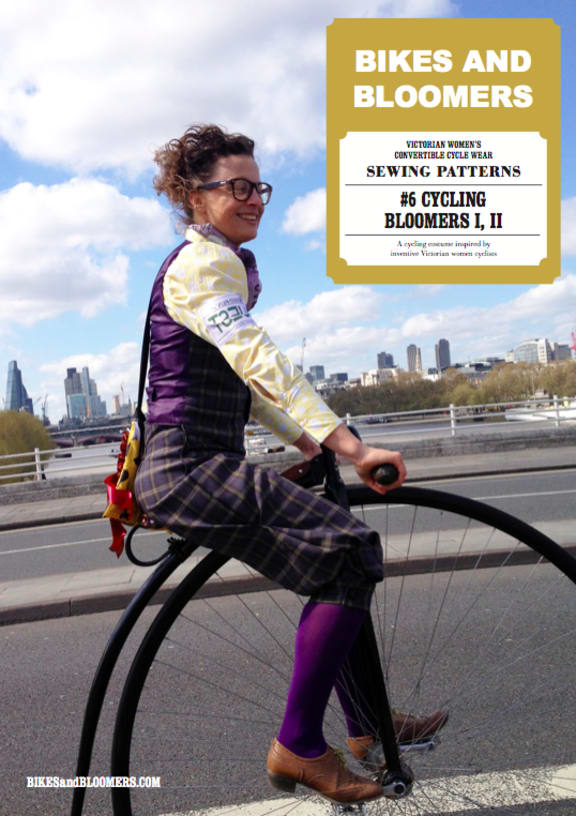
Cycling Bloomers Pattern Photo: supplied
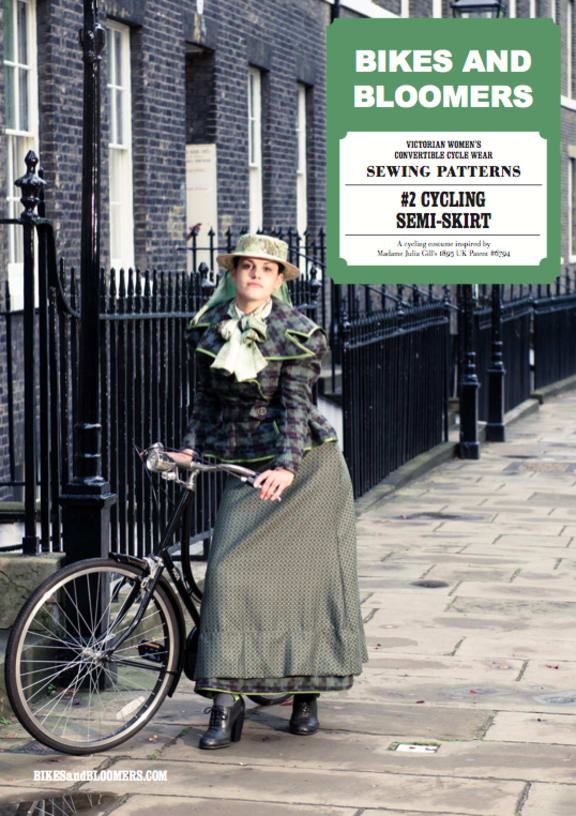
Cycling Semi-Skirt Pattern Photo: supplied

